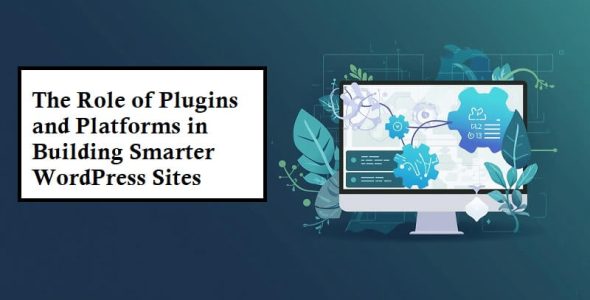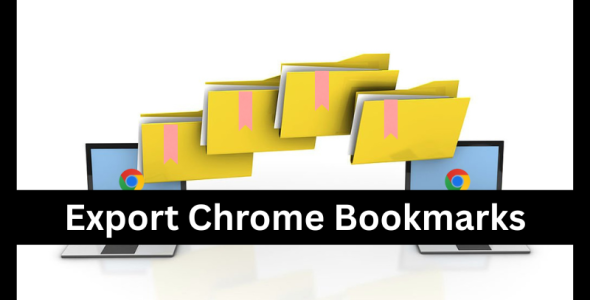How to Build a Flutter App for Any WordPress Site?
You can drastically improve your online visibility with the Flutter App for any WordPress website. Imagine if you could create a beautiful, high-performing app with only one codebase that works perfectly on iOS and Android. Your users will always have a smooth, interesting experience whether they are online or offline, thanks to our time and money-saving solution.
Additionally, you can maintain audience engagement and return visits with features like push alerts and access to native device functionality. This blog post will review the step-by-step instructions for creating a Flutter app for any WordPress website. Let’s start immediately by creating an app that will bring your WordPress website to life!
Flutter App – What is it?
Additionally, mobile applications have significantly increased the performance of nearly every platform and made a huge splash. By looking at the Flutter application for WordPress websites, you may expand your audience reach. We’ve written this post to provide you with further information about your options.
In the end, you’ll understand how this program, with its effective features and straightforward codebase, enhances the WordPress user experience and user interface. With the aid of Flutter app development, you may boost your online presence and grow your online audience, regardless of your level of experience as a developer, owner of a company website, or passionate content producer.
The Step By Step Process to Create Flutter App for WordPress Site
You may turn any WordPress website into a Flutter app by following the instructions provided below.
Step 1: Configure your environment for Flutter.
It’s really simple and important to set up Flutter Environment. Almost all platforms support Flutter, so you can use it to develop apps for both iOS and Android. Come with me as we explore your options.
- Select the OS: The first step in configuring Flutter is selecting your operating system. You may choose between Linux, macOS, or Windows. Verify that it fulfills the system requirements for Flutter.
- Download and Install Flutter: Download the stable version of Flutter for your operating system by visiting the official Flutter website, carefully reading the documentation, and following the steps. After unpacking and downloading the files, place them wherever on your computer.
- Configure the Path for Flutter: Include Flutter in your system’s PATH variable so that you may run commands for Flutter from any terminal or command prompt. It’s similar to always having simple access to Flutter tools.
- Set up the assistance tools: Depending on your operating system, installing other tools like the Android SDK or Git may be necessary. These utilities make Flutter function more efficiently.
- Verify Installation: Type “flutter doctor” into a terminal or command prompt after it has opened. This command lets you know if anything is missing and verifies that Flutter was installed successfully.
- Select an IDE: To build an app, you must have Visual Studio or Android Studio installed on your computer.
Step 2: Launch a New Flutter Project.
Utilizing the Flutter CLI command line, you must establish a New Flutter Project.
flutter create your_app_name
cd your_app_name
Enable Flutter for Web by using the following command:
Flutter config –enable-web
Now, Create a web directory within your Flutter project by running the below command:
mkdir web
Step 3: Construct the User Interface.
It’s time to employ Flutter Widgets and frameworks to create your app’s user interface. Using the HTTP packages, call the WordPress REST API to retrieve data from the WordPress website.
Make certain the REST API is activated on your WordPress website. This is a default feature on most contemporary WordPress websites.) Develop a REST API service to retrieve data from your WordPress website.
import ‘package:http/http.dart’ as http;
Import ‘dart:convert’;
class ApiService {
final String baseUrl = “https://your-wordpress-site.com/wp-json/wp/v2/”;
Future<List<dynamic>> fetchPosts() async {
final response = await http.get(Uri.parse(“${baseUrl}posts”));
if (response.statusCode == 200) {
return json.decode(response.body);
} else {
throw Exception(‘Failed to load posts’);
}
}
}
Step 4: Using Widgets to Present WordPress Content
Display the retrieved data using Flutter widgets.
import ‘package:flutter/material.dart’;
import ‘api_service.dart’;
class HomePage extends StatelessWidget {
final ApiService apiService = ApiService();
@override
Widget build(BuildContext context) {
return Scaffold(
appBar: AppBar(title: Text(“WordPress Blog”)),
body: FutureBuilder(
future: apiService.fetchPosts(),
builder: (context, snapshot) {
if (snapshot.connectionState == ConnectionState.waiting) {
return Center(child: CircularProgressIndicator());
} else if (snapshot.hasError) {
return Center(child: Text(“Error: ${snapshot.error}”));
} else {
List posts = snapshot.data;
return ListView.builder(
itemCount: posts.length,
itemBuilder: (context, index) {
return ListTile(
title: Text(posts[index][‘title’][‘rendered’]),
subtitle: Text(posts[index][‘excerpt’][‘rendered’]),
);
},
);
}
},
),
);
}
}
Step 5: Run Tests on Various Devices.
Let’s test the app on a web browser first to see whether it is operating correctly. Enter the following command to achieve this:
flutter run -d web
Similarly, to test on Mobile, use the following command:
For Android:
flutter run -d android
For iOS:
flutter run -d ios
Step 6: Improve Mobile App User Interface and Layout
Optimizing the app’s layout and user experience is essential to making it more mobile-friendly. If you are using a WordPress accessibility plugin, the user interface may look different on various platforms or devices.
Step 7: Make the App Live
Can I find all the paperwork and documentation needed to distribute the app on well-known app marketplaces like Google Play and the Apple App Store? Ensure that you have carefully read through and incorporated their instructions into your app before the app’s official release. Release/publish the app when everything has been finalized, and you are certain that everything is prepared.
Overall, follow these few steps to get the most out of the Flutter framework, add new features to your complete digital environment, and expand your audience through a stronger online presence.
What are the Advantages of Creating a Flutter App for a WordPress Site?
- With Flutter, you can create a single app that functions on both iOS and Android platforms. This will save you money and time, as you won’t need to develop unique apps for every platform.
- Better User Experience: Flutter allows you to create stunning and responsive user interfaces (UIs), giving your app a gorgeous and engaging visual style. A mobile website is better than this.
- Flutter apps operate like native apps, which makes them incredibly quick and seamless. As a result, users will experience faster load times and more seamless interactions.
- Operates Offline: When a user is on the go, having access to their material even when the Internet is unavailable is a great convenience.
- Easily notify users about new articles, news, or critical alerts using push notifications to stay connected and keep your audience interested.
- Make Use of Device Features Increase the usefulness of your app by using tools like GPS, cameras, and sensors.
- Constant Branding: An app that ensures your branding is accurate and constant may provide a well-executed and polished user experience.
- Earn Money: Managing in-app purchases, subscriptions, and advertisements is more difficult on mobile websites, yet apps provide additional revenue streams.
- Superior Security: Apps may provide consumers with peace of mind by enhancing security for items like user logins and payment information.
- No Distractions: Unlike mobile websites, which may have browser tabs and other distractions, apps offer a more concentrated experience.
- Rapid Development and Updates: Flutter’s quick reload functionality allows users to observe changes immediately without restarting the application, speeding up and simplifying development.
Reasons Why You Should Use Flutter on Your WordPress Website.
Allow me to explain why Flutter is a great option for creating mobile apps that enhance your WordPress website before moving on to the “how-to” part:
Unified Codebase: As previously discussed, Flutter employs a single codebase across a wide range of platforms, enabling developers to use it for several systems. It may also be a very cost-effective alternative if costs are a factor. This results in quicker development and deployment timelines. In addition, fewer problems and programming faults will likely occur with a single codebase.
Fast Development: Flutter facilitates quick code updates and instant visual feedback by utilizing the hot-reload mechanism in addition to a single codebase. This improves overall efficiency and significantly speeds up the development process.
Visually Stunning UI: Experts can design visually attractive and very responsive interfaces using a wide range of customizable libraries and widgets. Having the app created to complement your brand’s aesthetic perfectly may ensure a unified online presence.
Conclusion
You may fully use your WordPress website’s capabilities and improve user experience by developing a Flutter app for it. These days, mobile applications are quite popular. They also assist in gathering user data, which may help you improve your company tactics and get more success.
Your consumers may have a seamless mobile experience thanks to WordPress’s robust capabilities and Flutter’s adaptability. Put a Flutter app on any WordPress website and give it a try. If you’re a novice or an experienced developer, this blog will help you get the confidence you need to construct an app and generate more leads.

 My Account
My Account 

